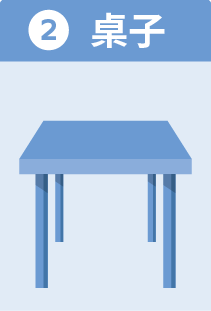| → | CHOP INTEND |
| → | HFMSE |
| → | HINE |
| → | 6MWT |
| → | CMAP、MUNE |
上肢肌力測試(ULM)是為了評估無法行走的SMA病患所開發的,它可以了解患者日常生活中的身體行動能力。對於較虛弱病人,HFMSE只能評估部分的上肢肌力。17ULM對SMA病患(30個月大至27歲)的評估已經證實有效,其中包括無法行走的年輕病患和虛弱的孩童。18 該模組包含9個可以在短時間內(5-10分鐘)利用普通器具執行的任務(例如,用鉛筆繪製連續的線條、拿起硬幣並放入杯子、按下按鈕來開啟一盞燈、舉起一個飲料罐飲用、從塑料容器上移開蓋子、提起一個重物並將其在預先印製的紙上從一個圈移動到另一個圈)。18 |
|
ULM的分數在12個月內可能保持相對穩定。17研究人員對晚發型SMA(II型和III型)無法行走的病患(n = 74)做了研究;年齡範圍為3.5〜29歲(平均年齡10.22,標準差 6.15)。17相較於基線 (平均10.23,標準差 4.81),第12個月ULM分數增加0.04分 (標準差1.17)。 大部分大於或等於2分的變化發生在小於或等於5歲的兒童中。7
ULM中大於±1-2分的變化被認為可能有臨床意義。17 |
|
修訂版的上肢肌力測試 (RULM):解決ULM的天花板效應,讓測試能更廣泛地運用在SMA病患群中。RULM共有20個項目,最高分數為37分。各項目評分為0至2分19,包含評估肩膀、手肘、手腕、手指部位的運動功能。以下為施測前的重點注意事項,以維持評估的信度:
RULM 測試前注意事項

須有椅背、椅面和地面平行、雙腳能踩到地面或輪椅踏板

桌椅擺放位置一致、桌面調至輪椅扶手或病人肚臍高度

按量表題項順序執行

每次都由同一位治療師施測,減少評估過程之變異性
|
依照患者狀態選用較適合的運動功能評估工具
目前仍無一個運動功能評估工具能適用於所有的 SMA 患者。評估者應依照病患的功能狀態,選用適合的運動功能評估工具34 ,避免如天花板或地板效應,讓患者真實的進步得以反應。
REFERENCES
1. Finkel RS, McDermott MP, Kaufmann P, et al. Observational study of spinal muscular atrophy type I and implications for clinical trials. Neurology. 2014;83(9):810-817. 2. Montes J, Gordon AM, Pandya S, De Vivo DC, Kaufmann P. Clinical outcome measures in spinal muscular atrophy. J Child Neurol. 2009;24(8):968-978. 3. Darras BT, Royden Jones H Jr, Ryan MM, De Vivo DC, eds. Neuromuscular Disorders of Infancy, Childhood, and Adolescence: A Clinician’s Approach. 2nd ed. London, UK: Elsevier; 2015. 4. Mercuri E, Finkel R, Montes J, et al. Patterns of disease progression in type 2 and 3 SMA: implications for clinical trials. Neuromuscul Disord. 2016;26(2):123-131. 5. Kolb SJ, Coffey CS, Yankey JW, et al; the NeuroNEXT Clinical Trial Network and on behalf of the NN101 SMA Biomarker Investigators. Baseline results of the NeuroNEXT spinal muscular atrophy infant biomarker study. Ann Clin Transl Neurol. 2016;3(2):132-145. 6. Data on file. Biogen Inc, Cambridge, MA. 7. Haataja L, Mercuri E, Regev R. Optimality score for the neurologic examination of the infant at 12 and 18 months of age. J Pediatr. 1999;135(2 pt 1):153-161. 8. Romeo DM, Ricci D, Brogna C, Mercuri E. Use of the Hammersmith Infant Neurological Examination in infants with cerebral palsy: a critical review of the literature. Dev Med Child Neurol. 2016;58(3):240-245. 9. De Sanctis R, Coratti G, Pasternak A, et al. Developmental milestones in type I spinal muscular atrophy. Neuromuscul Disord. 2016;26(11):754-759. 10. Glanzman AM, Mazzone E, Main M, et al. The Children’s Hospital of Philadelphia Infant Test of Neuromuscular Disorders (CHOP INTEND): test development and reliability. Neuromuscul Disord. 2010;20(3):155-161. 11. Glanzman AM, McDermott MP, Montes J. Validation of the Children’s Hospital of Philadelphia Infant Test of Neuromuscular Disorders (CHOP INTEND). Pediatr Phys Ther. 2011;23(4):322-326. 12. Spinal Muscular Atrophy Clinical Research Center. CHOP INTEND for SMA Type I score sheet. http://columbiasma.org/links.html. Updated March 14, 2013. Accessed April 26, 2016. 13. Finkel RS, Chiriboga CA, Vajsar J, et al. Treatment of infantile-onset spinal muscular atrophy with nusinersen: a phase 2, open-label, dose-escalation study. Lancet. 2016; 388(10063):3017-3026. 14. Glanzman AM, O’Hagen JM, McDermott MP, et al; the Pediatric Neuromuscular Clinical Research Network for Spinal Muscular Atrophy (PNCR), and the Muscle Study Group (MSG). Validation of the Expanded Hammersmith Functional Motor Scale in spinal muscular atrophy type II and III. J Child Neurol. 2011;26(12):1499-1507. 15. The Pediatric Neuromuscular Clinical Research Network for SMA. Expanded Hammersmith Functional Motor Scale for SMA (HFMSE). http://columbiasma.org/links.html. March 7, 2009. Accessed April 25, 2016. 16. Kaufmann P, McDermott MP, Darras BT, et al. Prospective cohort study of spinal muscular atrophy types 2 and 3. Neurology. 2012;79(18):1889-1897. 17. Sivo S, Mazzone E, De Sanctis, et al. Upper limb module in non-ambulant patients with spinal muscular atrophy: 12 month changes. Neuromuscul Disord. 2015;25(3):212-215. 18. Mazzone E, Bianco F, Martinelli D, et al. Assessing upper limb function in nonambulant SMA patients: development of a new module. Neuromuscul Disord. 2011;21(6):406-412. 19. Mazzone ES, Mayhew A, Montes J, et al. Revised Upper Limb Module for spinal muscular atrophy: development of a new module. Muscle Nerve. 2016. doi:10.1002/mus.25430. 20. Montes J, McDermott MP, Martens WB, et al. Six-minute walk test demonstrates motor fatigue in spinal muscular atrophy. Neurology. 2010;74(10):833-838. 21. Mazzone E, Bianco F, Main M, et al. Six minute walk test in type III spinal muscular atrophy: a 12 month longitudinal study. Neuromuscul Disord. 2013;23(8):624-628. 22. Swoboda KJ, Prior TW, Scott CB, et al. Natural history of denervation in SMA: relation to age, SMN2 copy number, and function. Ann Neurol. 2005;57(5):704-712. 23. Arnold WD, Sheth KA, Wier CG, et al. Electrophysiological motor unit number estimation (MUNE) measuring compound muscle action potential (CMAP) in mouse hindlimb muscles. J Vis Exp. 2015;103:1-8. 24. Bromberg MB, Swoboda KJ. Motor unit number estimation in infants and children with spinal muscular atrophy. Muscle Nerve. 2002;25(3):445-447. 25. Monti RJ, Roy RR, Edgerton VR. Role of motor unit structure in defining function. Muscle Nerve. 2001;1;24(7):848-866. 26. Finkel RS. Electrophysiological and motor function scale association in a pre-symptomatic infant with spinal muscular atrophy type I. Neuromuscul Disord. 2013;23(2):112-115.27. Kizina K., et al. Sci Rep. 2020 Jul 6; 10 (1):11069; 28. Wwl BD., et al. J Neurol. 2021 Mar;268 (3):923-935.; 29. Sansone V. et al. Neuromuscular Disorders.2021; 31 (supp):S135-S136.; 30. Kouri I. et al. J Clin Neuromuscul Dis. 2020.Dec; 22 (2):105-108.; 31. Kennedy RA. et al. J Foot Ankle Res. 2020 Mar 2; 13 (1):10.; 32. Rouault F, et al. Neuromuscul Disord. 2017; 27 (5):428-438.; 33. Michelson D, et al. Neurology. 2018; 91 (20):923-933. 34. Pierzchlewicz K, et al. Child Neurol Open. 2021 Jan-Dec; 8: 2329048X211008725.
SMA患者的基本活動能力與病情進展如何決定日常活動與生活方式?
了解更多